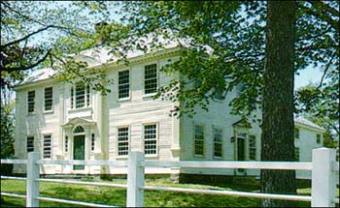Kathleen Moore, one of the more remarkable women in Connecticut history, has also been one of its least known figures, despite a heroic career as a lighthouse keeper that began at Black Rock Harbor Lighthouse near Bridgeport when she was 12. It continued until her retirement at 84 in 1878.
In between, she was credited with saving 21 lives, often braving the storm-tossed waters of Long Island Sound in a small craft at great peril to her own safety.
Her story is told at the United States Coast Guard Museum at the service’s academy in New London. But now that story will be told in an entirely different way. The Coast Guard has named its newest ship The Coast Guard Cutter Kathleen Moore. The 154-foot patrol craft was built by Bollinger Shipyards in Lockport, La., and is the ninth Fast Response Cutter delivered to the Coast Guard.
The shipyard that built the Kathleen Moore also provided recognition for this remarkable Connecticut woman in a different way. When she died in 1899 Moore was buried without a marker, but the people at Bollinger Shipyards bought an impressive stone that marks her burial site and notes her role as “A Coast Guard Heroine”. A ceremony, complete with Coast Guard Color Guard, noted the recent occasion.



